Osteospermum or, as it is also called, a capska daisy, an amazingly beautiful flower, pleasing abundant and long blossoms almost the entire growing season. The diverse palette of the paints of large inflorescences, which literally "crack up" a bush of an exotic plant cannot leave a single amateur "beautiful" indifferent.
In addition to high decorativeness, culture is distinguished by absolute unpretentiousness in care and high vitality.
How to grow a flower yourself in the garden? Is osteosperm with a perennial or annual plant? What care is needed and how the Cape Margarist is multiplied? In this selection of material - all the answers to the exciting questions.
Osteospermum, plant description
- Osteospermum is an extensive genus of both annual and perennial plants (depending on climatic conditions). Moreover, it can be grassy crops, shrubs or semi-stares.
- The osteospermum refers to the Astrov family, which is also called "comprehensive".
- The scientific name of the genus translates the literal "bone" and "seed". The people are more often found such names: African Chamomile, Capping Daisy, South African Chamomile, Blue-eyed Chamomile, Capping Chamomile. Such beautiful flower names are explained by the external similarity of the "Overseas Beauty" with a habitual chamomile.
- Osteospermum flower is an evergreen decorative plant with a reprehensive stem, although there may be occasions with a flutter type of shoots.
- In height, the plant is capable of reaching up to the 1st meter. Leaves gear, dense, not symmetrical. The color of the leaves and the stems are more often green, although there are varieties and with a gray-colored outdoor part of the plant.
- Numerous flowers collected in the inflorescence of baskets can be of different sizes (from 4 to 10 cm in diameter) and color, depending on the type and variety. There are varieties of white, yellow, orange, pink, purple or two-color palette. The core is usually painted more contrast: in blue, black or purple blue color. Inflorescences may be simple, semi-grade or terry. One inflorescence "lives" about 5 days, and new, revealing buds come to replace.
- Inflorescence, as well as all representatives of astera, consists of flowers of 2 types: bunch (edge) and tubular (central). The form of the bunch of petals is more often oblong, pointed, although now a large number of hybrid varieties with a "spoonful" form are derived, when each detached petal resembles a spoon.
- Osteospermumum blossom is long and abundant, continues from June to the first frosts of autumn. Seeds form boundary tongue flowers. Fruit - seed.
Osteospermum, plants
- The historical homeland plant is considered Africa and the Arabian Peninsula, where the flower is represented by more than 60 types, is a perennial and retains green leaves throughout the year.
- In the climate of Russia, osteospermum is growing more often as an annual plant. In the middle lane, the seeds are planted first into a greenhouse, and only after the onset of steadily warm weather, the seedlings are transplanted into open ground. If there is a need to maintain the plant until next year, some flower shift a flower for the winter to the room, and in the spring again planted in the garden, - in this case, osteospermum will be considered a "legitimate perennial".
- An interesting feature of the plant is the fact that its flowers are opened only in sunny clear weather, protecting the pollen from the weather. Pollination is possible only with the participation of insects.
- It is distinguished by osteospermum from other plants by the specific tart smell of leaves released by special glands.
- The thermal-loving plant easily tolerates heat, short periods of drought and a slight decrease in temperature.
- Because of the external similarity, osteospermum is often confused with such a flowering plant as a dimorfootose. However, Dorphothek is a purely annual plant, while osteospermum in nature is a perennial.
Osteospermum, plant application
- Several types of osteospermum are beautiful decorative plants widely used by landscape designers for designing gardening areas, flower beds or household plots.
- Many osteospermum varieties with a variety of shape of petals and all sorts of shades made this plant a very popular decorative culture of our country. And considering the endurance and unpretentiousness of the flower, osteosperm has become a "welcome guest" for many flower water.
- The coastards of osteospermum are planted at the base of the mountaineering, in rocky gardens, in Rabatkov or in group compositions of mixborators. It also looks like flowers grown in vases, decorative ads or large floral pots, which can be transferred to the winter to the winter, but the bright room and retain so far until the spring.
- The lowest types of osteospermum are often planted as a spectacular blooming soil, along the borders or on the foreheads of the flower bed.
- Experienced flowers are recommended to plant white color osteospermums with any contrastful painted colors: bells, petunias, forget-me-not, lavender, Iberis, etc. With the motion of the genus Osteospermum, the asters, geranium, junk, pallet, cuff or nyondyarm are well combined.
- On the cut, the plant is practically not used, since damage to the osteospermum stem causes an unpleasant smell, unacceptable to create bakery compositions.
Flower osteospermum, photo
Osteospermum varieties and varieties
The genus of plants osteospermum includes more than 40 species, the most popular of which in culture are only three forms:
- Osteospermum Ecloon. Shrub shape, can be with straight, spread or fluttering stems. In the height of the shrub, depending on the variety, it can be both a low-speed soil and a relatively high (up to 1.5 m) flowering plant. The inflorescence diameter is about 8-10 cm, the color of the petals from above is white, the bottom of the pinkish, the core of the dark purple shade. The common compact variety "Starshine" has inflorescences with a bright, blue color, core.
- Osteosperm shrub. Perennials with fluttering stems that quickly grow up and occupy a large plot. There are several varieties of this type of osteospermum with white, light-lilac and red tongue wrenches.
- Osteosperm noticeable. A long-term view with pink inflorescences and a dark core.
As for the removal of new hybrid varieties, there are a huge number of their number in culture, differing in the colors, the form of petals, the size of an adult plant and the type of stem. Consider the most common osteospermum varieties:
- Variety osteosperm "BAMBA". The edge flowers are wide, while dissolved painted in white, which over time acquires a purple shade.
- Variety osteosperm "Buttermilk". In the height, the shrub reaches no more than 60 cm. The color of the foliage - the SIZO-Green. Pale yellow shade inflorescences with a dark contrasting core.
- CANNINGTON ROY osteosperm grade. The flutter view of the semi-staple with baskets of white and pink tips, which over time fully acquire a gentle pink shade. Infusion diameter - about 8 cm.
- Variety osteosperm "Congo". Small inflorescences of pink-purple tones.
- Grade osteosperm "pemba". Language petals of extreme flowers up to half of the entire length, fully thoroughly in the tube.
- Variety osteosperm "Pink Whirls". The plant reaches a height of about half a meter. Inflorescences Pink, tongue flowers are often deformed.
- Grade Osteospermum "Sandy Pink". A low-rise plant, a height of about 40 cm with pink tongue flowers "spoonful" type.
- Sort Osteosperm "SILVER SPARKLER". Differs lowness (up to 40 cm) and light spots on the leaves. Regional flowers of white color.
- Sort by osteospermum "Volta". A feature of the variety is the change in the color of the tongue petals. At the beginning of flowering, they are purple-lilac tones, then brighten and become practically white.
- Sort Osteosperm "Whirligig". The grade grows in a height of up to 50 cm, the flexible tongue whores are painted on top of the top, from the bottom - the joy-bluish shades.
Osteospermum, agricultural landing
In order for osteospermum to please abundant long blossom, it is important to initially choose the place for planting the plant. You can plant osteospermum seeds as immediately in open ground and on seedlings, followed by picking on the flowerbed. The seaside cultural culture method is considered more preferable, as it allows to obtain highly viable seedlings that develop faster and earlier.
Given the fact that the root system of osteospermum is fairly sensitive and poorly tolerates a transplant, plant seeds are better to immediately plant into individual containers (plastic cups or peat pills).
Consider a step by step process of growing osteospermum.
Osteospermuma landing conditions
- The light-lubbile osteospermum loves solar open areas or a slight openwork half. Culture feels great even on the strong "sun" without losing attractiveness and decorativeness. In the shade, the flowers of the plant are not only crushed, but they will be closed all the time.
- As for drafts, it is better that the site will be protected from gusty winds and drafts.
- Osteospermum prefers moisture-permeable, loose and moderately fertile types of soil with neutral or weakly acid reaction medium. Too nutrient soil provokes the extension of the green mass of the bush to the detriment of his flowering. The optimal option will be a sandy mixture, consisting of a humoring, a delicate earth, leaf land and sand taken in equal parts. Close of groundwater occurrence is also undesirable, since the constant moisture will provoke the platform.
Growing seedlings osteospermumum
- Osteospermum seeds are seeded at seedlings at the end of March, early April. Prolonged soaking seeds do not like to accelerate the germination process, it is enough to put seeds for several hours to a moistened napkin or a mob.
- Peat pills, individual plastic cups or common containers (with an interval of 3-4 cm) filled with loose light soil are suitable as containers for future seedlings. Ideal for these purposes, a mixture of peat and sand is suitable.
- For sowing seeds, you can make 5 mm grooves or land from a separate seed into the specified depth with toothpicks. It will not be difficult to do this, considering the large size of the osteospermum seeds.
- The seed capacity is better to cover with glass or polyethylene, imitating the greenhouse conditions favorable for germination.
- For the appearance of germs, it will take periodic moistening of the soil from the sprayer (water temperature), daily ventilation "mini-greenhouse" and maintaining a warm temperature indoor (about 20-22 0WITH).
- After about 7-10 days, shoots begin to appear. Now the plants will also need light. Shelter from glass or polyethylene is completely removed.
- After the appearance of 2-3-sheets, in the case of landing into a common container, seedlings are peeling into separate containers. When transplanting, the stem is partially plugged into the ground.
- Slightly grown seedlings are pouring - they break up the top to stimulate the development of the lush bush and prevent the seedlings pull. This procedure is especially relevant for tall osteospermum varieties.
- Preparing seedlings to landing into open ground, do not forget about the hardening of seedlings, allowing to conduct a gradual adaptation of young plants to new environmental conditions. It is necessary to order seedlings in early May, starting from 15-20 minutes, opening a window or making seedlings to the street. Every day the duration of the procedure increases to 20-24 hours, when the seedlings are left in the air for the night. Naturally, by this time the air temperature will have stable positive indicators, without the threat of return freezers.
Landing Osteospermum seedlings in open ground
- Looking around the intended seedlings of osteospermum into the garden approximately at the end of May.
- For landing seedlings, planting wells are preparing, a depth of no more than 20-25 cm.
- Seedlings are transplanted by transshipment, trying to preserve the excavation com.
- The interval between plants may be different, depending on the design of the flower design. In group landings, it is recommended to adhere to the distance between plants at least 10 cm.
- After landing, the soil around plants are sealing and pouring abundantly.
- It will bloom such (seaside) osteosperm in June.
Osteospermum, care features
Osteospermum care In the open soil includes a number of minimal agrotechnical measures: watering, feeding and pinching. In addition, it is possible to keep the plant for the winter, in the spring to plant a perennial again on the flowerbed.
Watering and loosening osteospermumum
- Osteospermum is a thermal-loving and drought-resistant culture that can no problem carry short-term dry periods. However, to maintain high decorativeness of plants and abundant flowering, osteospermum needs regular, but moderate irrigation.
- At the same time, the mooring of the soil is unacceptable, as it is fraught with the reinforcement of the root system of perennial. By and large, osteospermum reacts poorly both to the overjoyment and drought, although if you choose from these two adverse factors, preference should be given to the latter.
- The irrigation rate depends on weather conditions, but it is also possible to navigate to the state of the upper soil layer. When breathing it is required, if it is necessary, if the soil is still wet - it is better not to rush with watering.
- After irrigated, the ground around the plant is loose or mulched.
Paging and feeding osteospermumum
- It is necessary to feed osteospermum every 3-4 weeks with mineral complexes designed for flowering plants.
- It is also possible to use organic fertilizers that alternate with mineral feeders.
- The first feeding is carried out during the bootonization of osteospermum, the last - at the end of summer.
- It is important to adjust the amount and concentration of the fertilizer introduced into the soil, since their excessive amount responds to increasing the green mass of the plant, and not desirable tying of buds.
- The blurred inflorescences are bad, so to improve the decorative type of perennial, should be removed manually.
- To stimulate bush and improving branching, the tops of the shoots of the plant periodically pinch.
Osteospermuma wintering
How to save osteosperm in winter?
- Osteospermomum may be not only annual, but also a perennial plant. To do this, in the fall, the bus is digging (along with an earthen room), placed in a spacious container and enter the cool room to ensure the heat-loving perennial period of rest. For the plant during this period, rare watering, good lighting and low air temperature (7-15 0WITH).
- In the spring, an adult "overwhelmed" the bush is planted again into the ground either use it for reproduction with cuttings.
- In the southern regions with a warm climate, osteospermum can winter and in open ground with shelter from leaves (or any other undercover material), but if the temperature drops below -10 0C, the plant dies.
- If the plant is cultivated in the southern regions and remains wintering in the open ground, its care begins with almost complete circumcision of the stems in the spring.
Osteospermum diseases and pests
Osteosperm has proven itself as a plant resistant and pests.
- The mooring of the soil can provoke the development of rot. To eliminate the problem, it is necessary to resolve the rates of irrigation, remove the affected parts of the plant and treat the bush of a fungicidal preparation.
- With the appearance of such pests, as a word, an insecticidal treatment of the plant ("accutelle", "Aktar", "carbofosoma") is used.
- In a very hot and dry period, the flower can fall into a kind of "hibernation". At this time, the bookmark of buds stops, flowering is practically not observed. Do not take such a phenomenon for the disease. At the occurrence of cooler weather, osteospermum is completely restored and continues to bloom.
Osteospermum, methods of breeding
Osteospermum, like most plants, is multiplied with vegetative (cuttings, the division of the bush) and the generative (seeds) methods.
The reproduction of osteospermum seeds
- A plant grown from seed cannot guarantee 100% preservation of the varietal signs of the parent individual.
- Osteospermum seeds can be collected independently or purchase in flower shops.
- Perennial seeds retain their germination for 4 years.
- A detailed step-by-step seed seeding process is described above, in the section "Cultivation of Osteospermum Seedlings".
- In addition, under favorable conditions, the Cape Daisian is capable of giving abundant self-seven.
- Sprouted seedlings in the soil can be used as a finished seedlings and transplant young plants to a permanent place.
Reproduction of osteospermum Chenkah
- A vegetative method of reproduction is considered the most acceptable and less laborious. A bush can be simply divided into several full (with roots) parts and planted separately.
- The second option is shilling. For this purpose, in May - June (in February, if the bush is indoors) from the osteospermum bush, young side shoots are cut off (6-10 cm long), which are not yet blooming.
- For the procedure, a sharp knife is used. Bottom leaves are cut at the shoots.
- Osteospermumum cuttings are placed in water for further rooting. The room temperature must be at least +20 0WITH.
- After the appearance of the roots, the cuttings are planted into a loose drained soil. You can independently prepare such an soil substrate from sand, garden land and humus (in equal proportions).
- Some flower products do not lower the ease of osteospermum into water, and immediately plant them into the soil, covering the can or plastic bottle. In this case, the generated greenhouse effect will stimulate the root formation.
- Care of cuttings is regular moistening of the soil, ensuring sufficient illumination (ventilating in case of a greenhouse) and positive temperatures in the room.
- The next year, in the spring, rooted grown cuttings land in an open ground.
Recently, garden sites, household flower beds and urban parks have become more and more decorated with blooming decorative bushes with gentle, similar to chamomile, flowerflowers. An unusual plant, osteospermum, has acquired popularity not only at the expense of its beauty and rich palette of shades, but also for unpretentious care. It will not be much difficult to grow osteospermum from seeds or cuttings at home even for a novice flower.

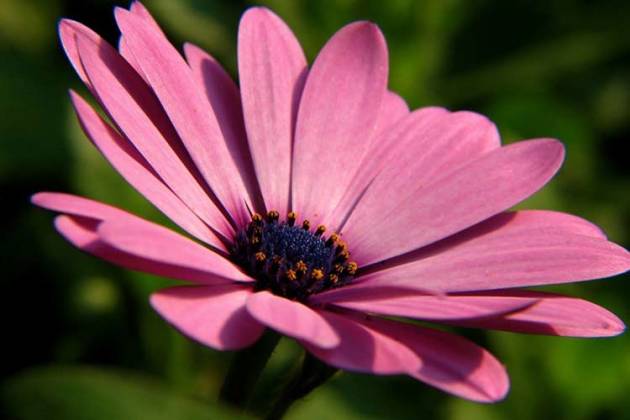
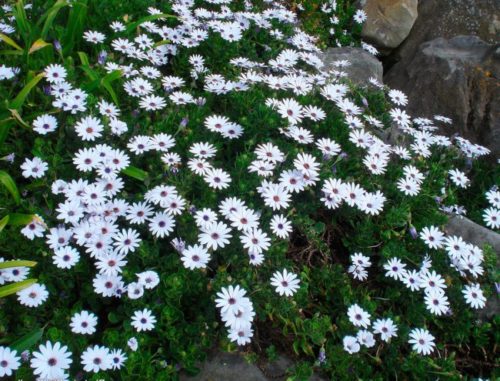
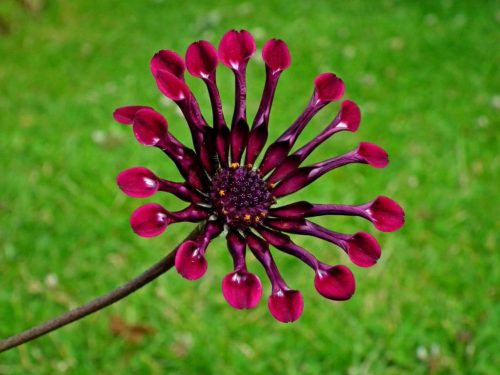
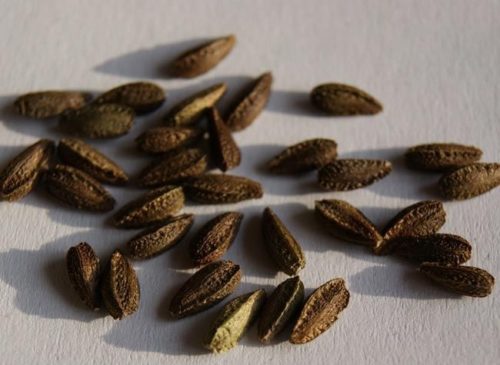
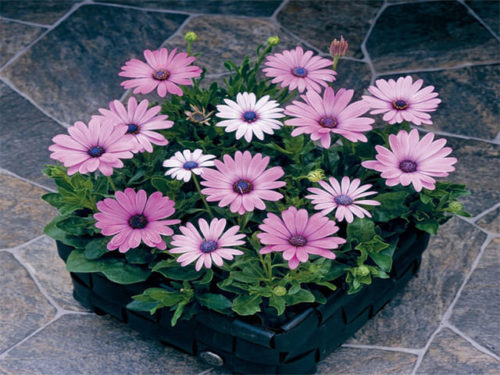

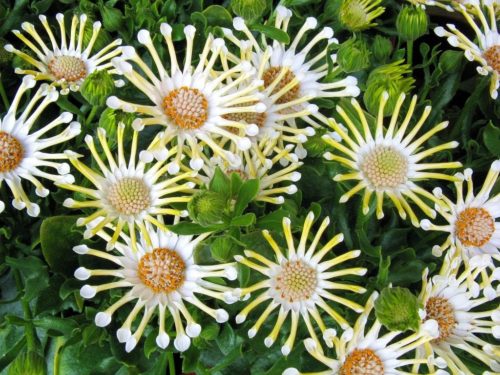
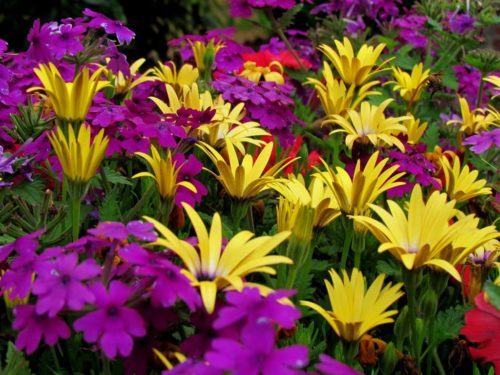
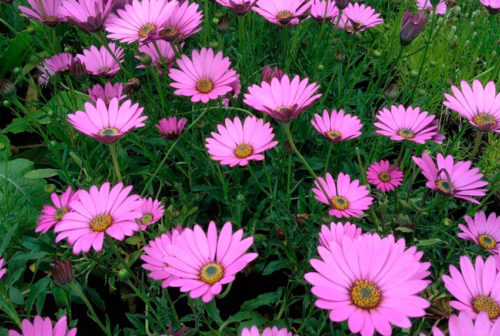
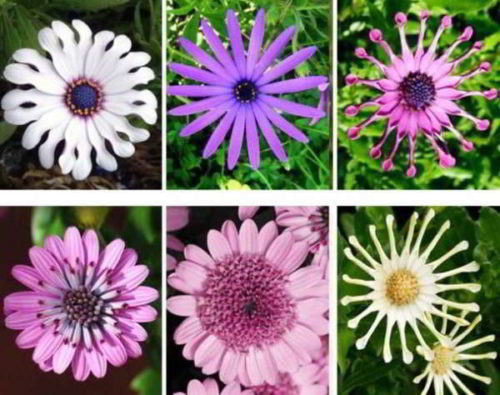
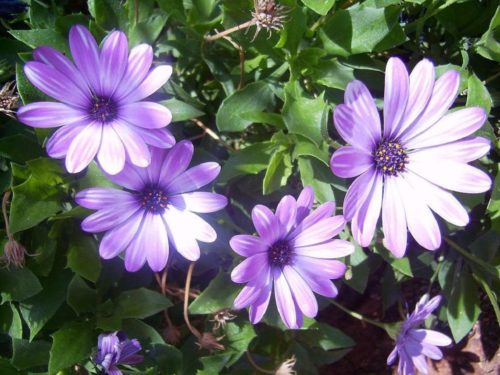





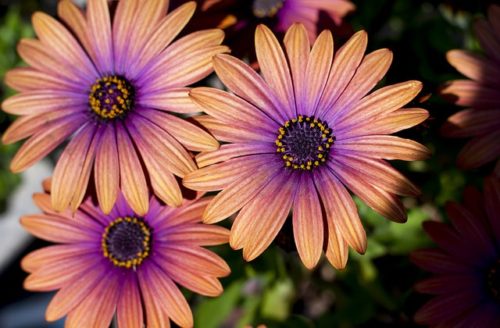

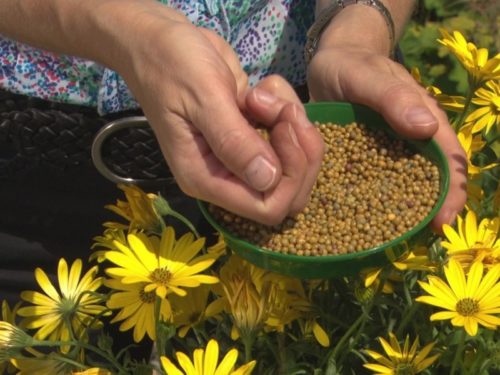

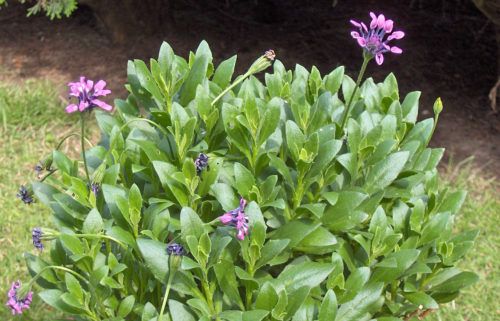


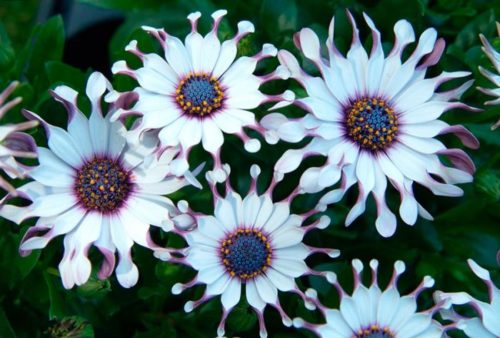
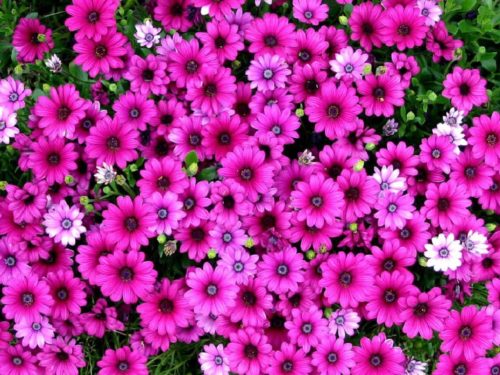

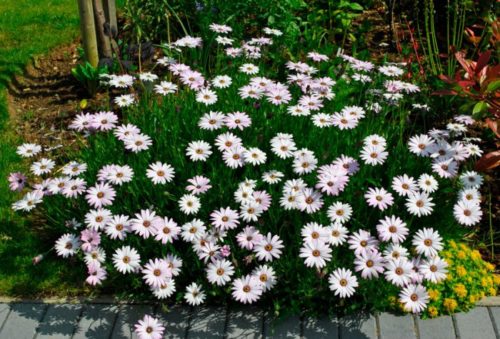
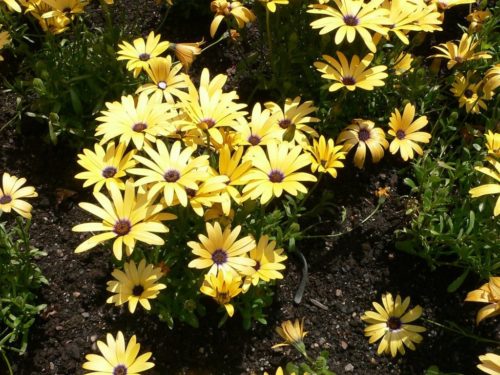
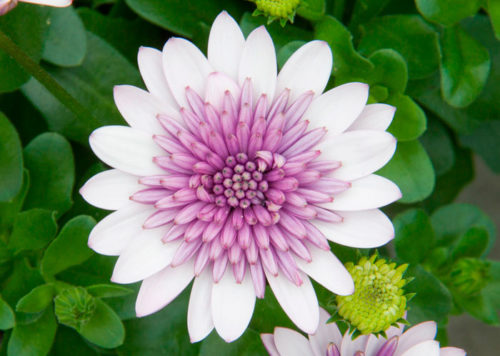

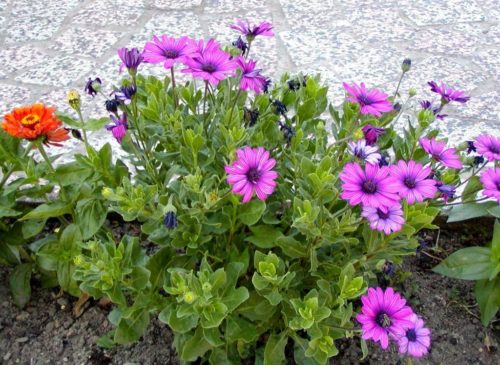

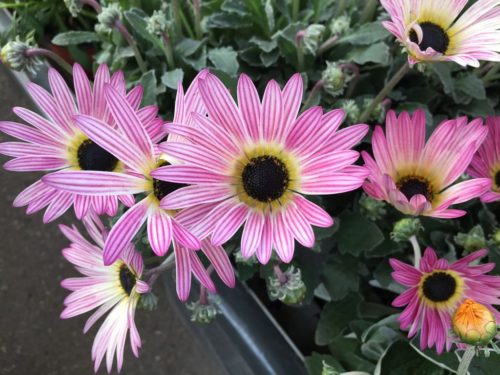

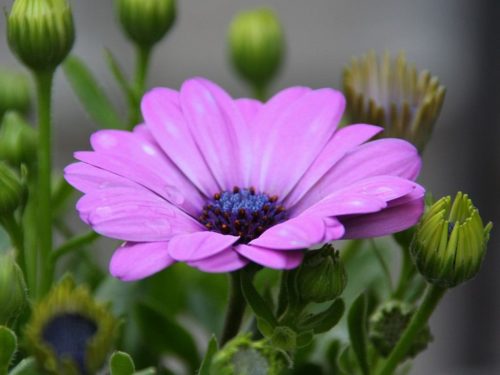
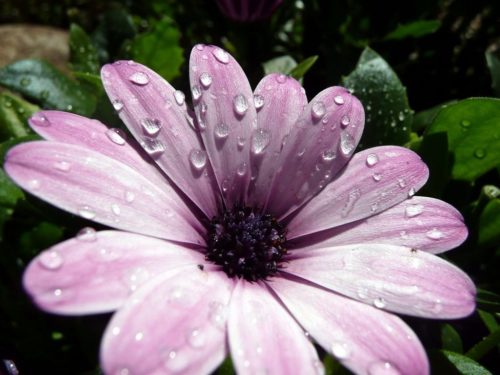
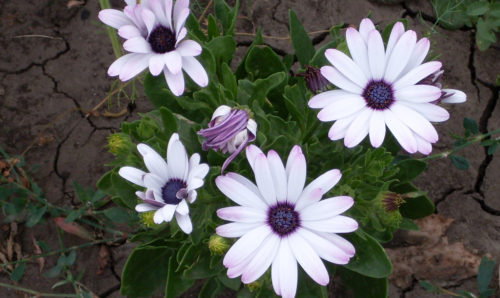
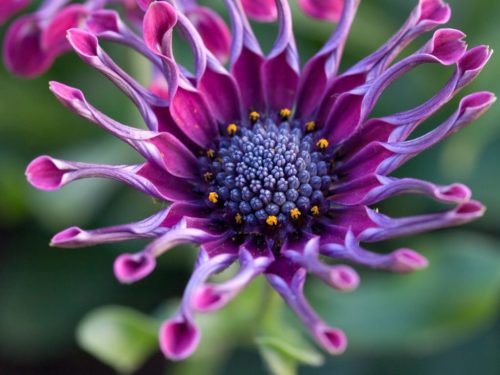

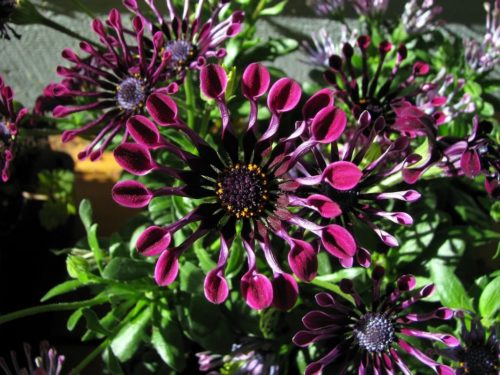
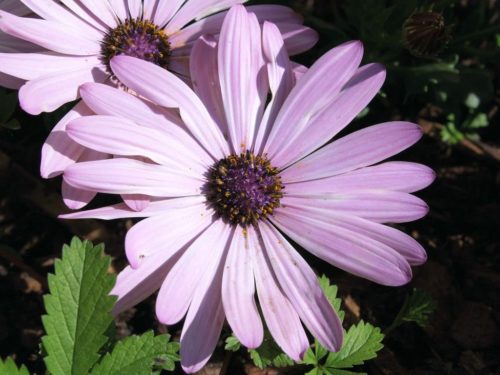
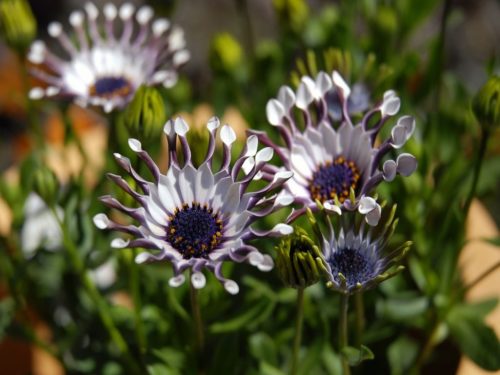












 Start a discussion ...
Start a discussion ...